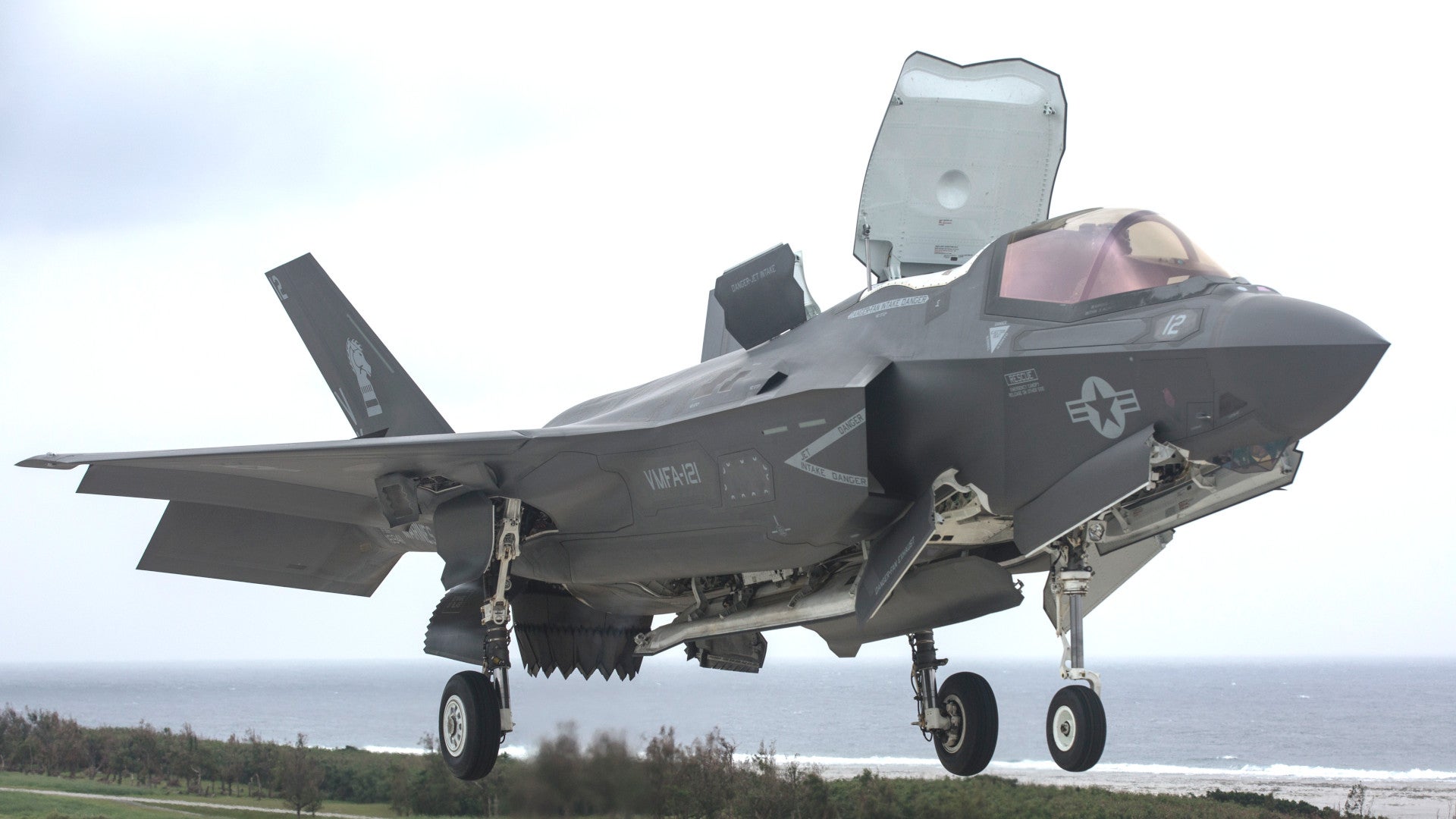A new Pentagon report is warning that the U.S. Marine Corps’ oldest F-35B Joint Strike Fighters may remain airworthy for just over a quarter of the aircraft’s expected lifespan due to serious structural problems. This could force the service to begin grounding jets, or retiring them permanently, as early as 2026. It also remains unclear whether subsequent improvements to the aircraft’s design on later models have significantly increased the durability of later production aircraft.
Bloomberg first reported the new details about the life expectancy of early block F-35Bs, which may be as low as 2,100 flight hours, after acquiring the most recent annual review of the program from the Office of the Director of Operational Test and Evaluation, more commonly known as DOT&E. This office publicly releases reports every year on how various significant military programs are proceeding in testing, often compiling data together with information from previous years.
The yearly reports on the F-35 also cover the entire Joint Strike Fighter program, including developments with the U.S. Air Force’s F-35A and the U.S. Navy’s F-35C, as well as components common to all three variants. Beyond the F-35B lifespan problems, the review also said concerns about cybersecurity vulnerabilities, as well as issues with the overall performance of the cloud-based Autonomic Logistics Information System (ALIS) computer network that supports all the F-35s, remained unresolved, according to Bloomberg.
We have yet to see the full report for ourselves and get more details about these particular problems, and any others it might highlight. But these particular points are hurdles that the Joint Strike Fighter program has been struggling to overcome for years and you can read about more about them in depth here and here. The latest DOT&E review also raised questions about the accuracy of the internal GAU-22/A 25mm gun in the Air Force’s A model against ground targets, another well-established issue that the Air Force has, at least implicitly, appeared to ignore over the years.

The appalling low durability of early F-35Bs is also something that DOT&E reports have highlighted in the past, but this is the first time there has been any concrete information on how bad the problem actually is. All three F-35 models are supposed to have a life expectancy of 8,000 flight hours.
The Joint Strike Fighter program office had demanded that a non-flyable airframe representative of each one of the three F-35 models go through the equivalent of three full life cycles, or 24,000 flight hours, of simulated routine wear and tear. Contractors hired to do the fatigue testing could make general repairs and conduct normal preventive maintenance at appropriate points in the experiments.
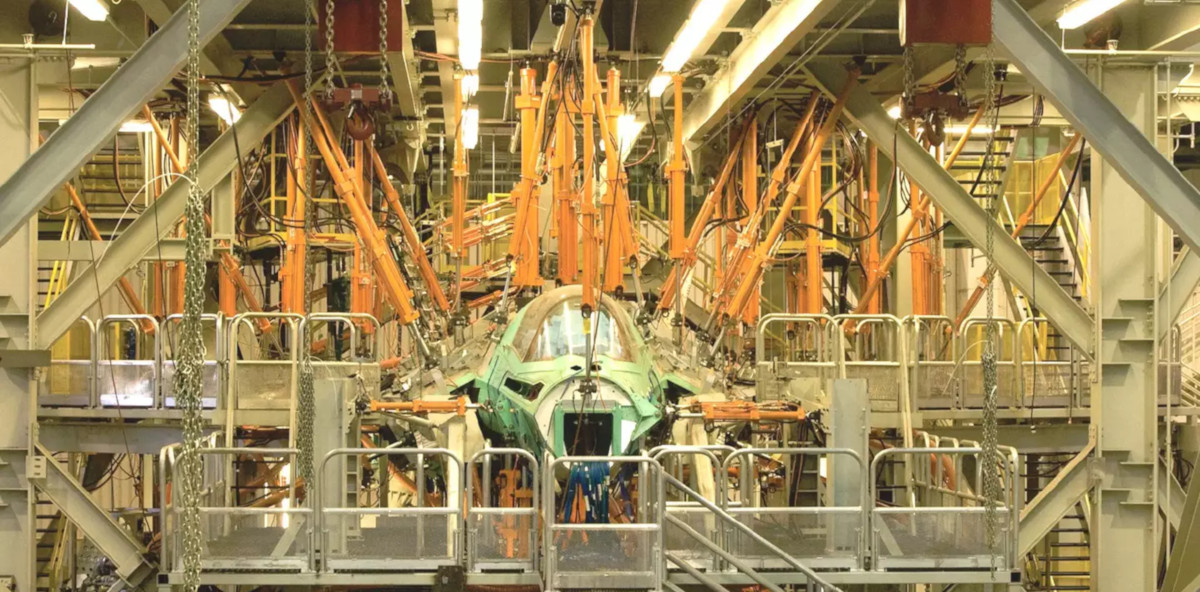
So far, only the F-35A test article has completed all of these tests. In 2017, the Joint Strike Fighter program suspended plans for the third round of testing on F-35B test article, also known as BH-1, because it was “no longer representative” of any actual production aircraft, according to DOT&E’s reports.
BH-1 had received significant structural redesigns over the course of testing, including a new carry-through-structure joining the wings to the fuselage, the latest DOT&E review explained, according to a separate report from Aviation Week. Testing had also exposed that certain components proved to be more prone to cracking than expected.
This can only reignite concerns about the F-35B’s basic design going back more than a decade now. In 2004, Lockheed Martin tasked a group of engineers, known as STOVL (Short Take Off/Vertical Landing) Weight Attack Team, or SWAT, with shaving pounds off the B model. This variant is still heavier than the F-35A due to the added weight of the lift fan, articulating exhaust, and other features necessary for its short- and vertical takeoff and landing capabilities. Those same features also reduce the size of its internal weapons bays compared to its cousins and give it a lower G rating compared to the A model.

Lockheed Martin’s SWAT cut 2,700 pounds off the F-35B. The changes they made also resulted in 1,300 pounds of weight savings on both the F-35A and C models as part of the herculean effort that effectively saved the Joint Strike Fighter program. Since then, critics had questioned exactly what had to get sacrificed to meet those goals as reports of cracking and other component failures have emerged with the B variant in particular.
The Marine Corps’ oldest F-35Bs are underperforming, in general, due in large part to their now thoroughly obsolete Block 2B software package and shortages of spare parts. In March 2018, U.S. Marine Corps Lieutenant General Steven Rudder, the service’s Deputy Commandant for Aviation, informed Congress that these aircraft were mission capable, on average, less than 40 percent of the time.
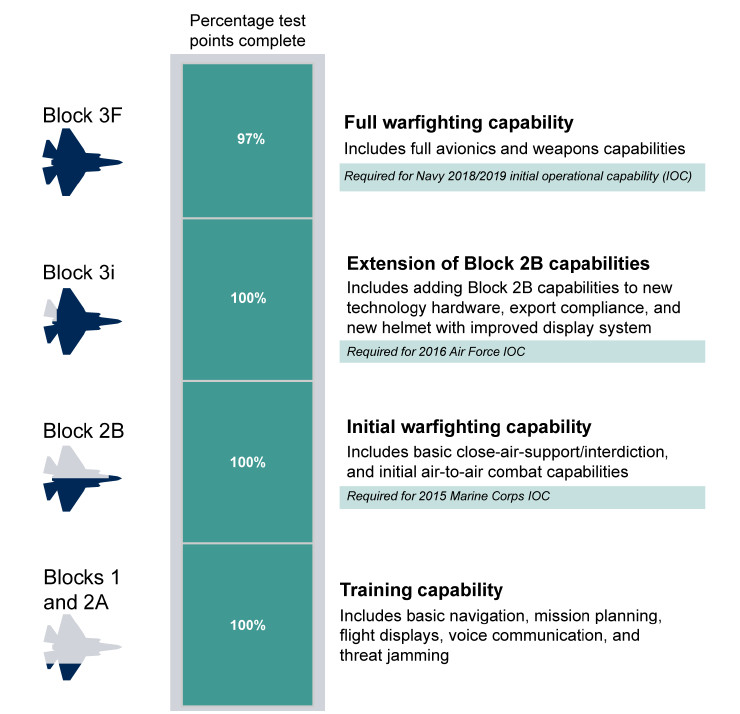
The limited capabilities of the Block 2B software already means that the Marines have relegated these aircraft to training roles and other non-combat roles, an arrangement that poses potential risks for the service’s ability to meet the demand for generating more F-35 pilots. The Corps has regularly downplayed these issues with its Joint Strike Fighter fleet. The service declared initial operational capability with the type in 2015 and used the aircraft in actual combat for the first time over Afghanistan in September 2018.
The Marines also suffered the first crash of an F-35 of any kind in 2018. This was one of the F-35Bs assigned to Marine Fighter Attack Training Squadron Five Zero One (VMFAT-501), the service’s premier Joint Strike Fighter training unit, but there is no evidence as yet that structural problems played a role in that accident.
The reason that there are so many different sub-configurations of the three main F-35 variants spread across the U.S. military at all is the result of a concept known as “concurrency.” The Pentagon had billed this idea, which involved stepping up production of the jets and buying dozens of low-rate production examples while simultaneously planning to implement any necessary upgrades across the fleet as time went on, as a cost-saving measure.
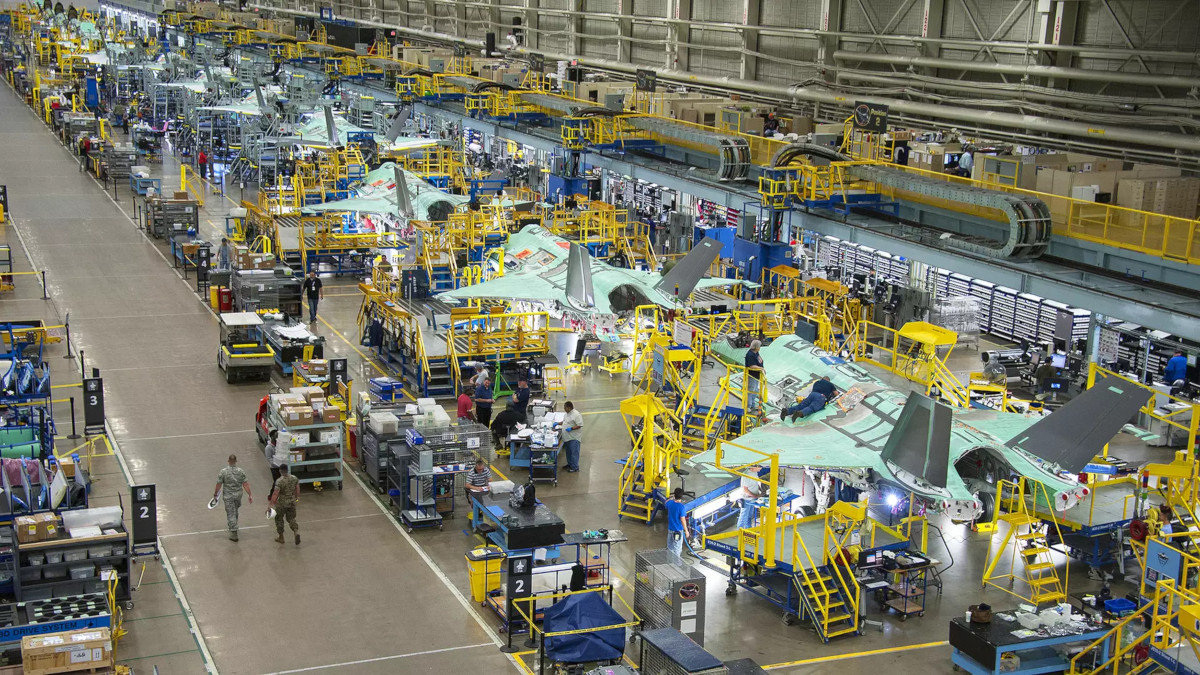
This has not turned out to be the case and there are now questions about whether it will ultimately turn out to be practical to upgrade any F-35s still running the older software, regardless of specific variant. If this comes to pass, the U.S. military will have sunk billions into jets that will never be combat capable and may be increasingly irrelevant even for training purposes as newer Joint Strike Fighters become increasingly distinct from the earlier examples.
The problems look set to become increasingly pronounced for the F-35B fleet if early models won’t be airworthy without significant structural upgrades by the end the next decade. Beyond that, there’s no guarantee that later model Bs will meet the 8,000 flight hour life expectancy goal, “even with extensive modifications to strengthen the aircraft,” either, according to previous DOT&E reports on the F-35 program. In the end, concurrency may leave the Marines with a fleet of aircraft that will only ever fly for a fraction of their expected service life before needing replacing entirely.
The Joint Strike Fighter program office has received funds for a new test article that is representative of the current B model configuration that it could use to gather more realistic data from the third round of fatigue testing, but it has yet to actually acquire that airframe, according to the latest review. The F-35C still need to complete its third cycle of testing, as well, though previous DOT&E reports have not highlighted severe structural issues with that model. The F-35A has completed its full battery of tests without any apparent major issues.
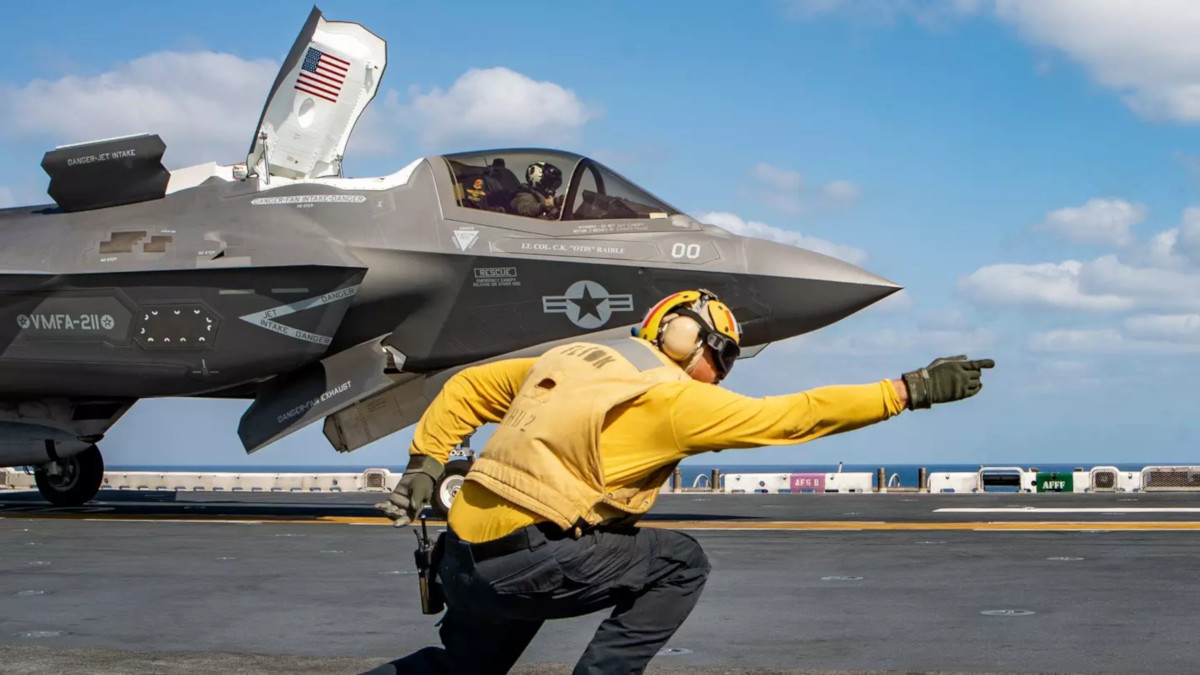
The new and worrisome details about the F-35B’s life span also come amid growing concerns about the readiness of the U.S. military’s F-35 fleets overall. In 2018, former Secretary of Defense James Mattis ordered the Air force, Navy, and Marine Corps to take the steps necessary to boost the availability of the Joint Strike Fighter fleet across the services, as well as that of F-16, F/A-18, and F-22 fighter jets, to an average of 80 percent by the end of the 2019 Fiscal Year.
“I am biased towards giving the taxpayer their money’s worth,” Acting Defense Secretary Patrick Shanahan more recently told reporters on Jan. 29, 2019, in response to questions about whether the former Boeing executive had pushed the Air Force to purchase new F-15s from his former employer over F-35s. “And the F-35, unequivocally, I can say has a lot of opportunity for more performance.”
It is worth noting that the Air Force and Lockheed Martin have said that the Air Force’s plans to acquire F-15Xs will have no impact on the F-35 program, something that we at The War Zone underscored when we broke the story initially. Shanahan’s statements do seem to highlight growing frustration within the Pentagon over persistent issues with the Joint Strike Fighter program, even as the jets continue to hit certain milestones and drop in price.
“If they choose to have an order of the F-15, it won’t be at the expense of F-35 quantities,” Marillyn Hewson, Lockheed Martin’s CEO, said during a routine earnings call on Jan. 30, 2019. “I’m hearing that directly from leadership in the Pentagon, and I think that’s an important point for me to make. It’s not just our suspicion, but I’ve been told that directly.”
We’re eager to get our hands on DOT&E’s latest review to see if there is any more specific information about the F-35B’s life expectancy or other issues still plaguing all three Joint Strike Fighter variants. From what we know now, though, there are already serious questions about the future of the Marine Corps fleet in the near term and about whether the U.S. military’s F-35 fleet as a whole can come anywhere close to meeting the performance targets the Pentagon has laid out for this year.
Update: 2/1/2019—
After we published this story, Lockheed Martin, who manufactures the F-35 Joint Strike Fighters, sent us with the following statement regarding the F-35B’s life expectancy:
The F-35s operating today are delivering exceptional capability, lethality and connectivity around the globe. While we await the full details of the ongoing Operational Test phase, we are actively enhancing all aspects of the F-35 to ensure it exceeds warfighter demands and outpaces evolving threats. Items identified in the Annual DOT&E report are well understood and have been resolved in partnership with the F-35 Joint Program Office or have an agreed path forward to resolution.
F-35B Service Life: The F-35B has completed full scale durability testing to 16,000 hours. Planned modifications and fleet management of the early contract F-35B aircraft will ensure that they meet the 8,000 hour service life requirement, and aircraft delivering today incorporate these design changes in the build process to ensure they’ll meet 8,000 hours or more.
However, as DOT&E’s report noted, the F-35B still needs at least another round of durability testing to meet the U.S. military’s requirements and confirm that the existing structural improvements will allow the aircraft to meet the 8,000 flight hour requirement. It also remains unclear how realistic the data from the second round of tests actually is, given that the BH-1 airframe had changed so significantly throughout the course of that testing that it was no longer representative of any production configuration in the end. The U.S. military’s F-35 program office did accept the results of that second round of testing.
Contact the author: jtrevithickpr@gmail.com
